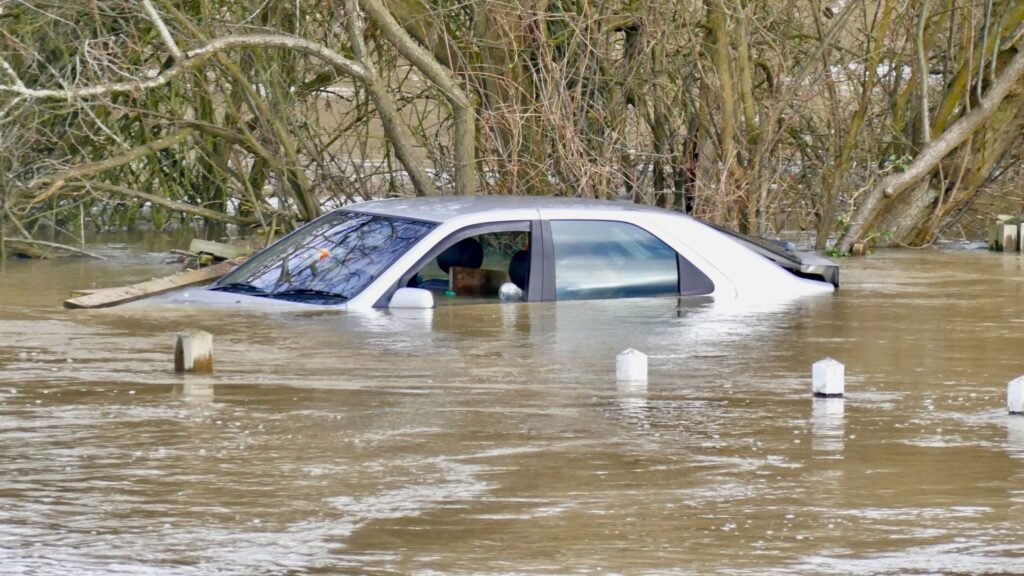Flooding in the UK is becoming a severe problem. Heavy rain and storms are more common than ever before. Many towns and cities have faced dangerous floods. These floods are causing damage to homes, roads, and businesses.
Flooding is becoming a more significant issue in the UK. Climate change, rising water levels, and urbanisation contribute to the problem. Individuals, communities, and the government must work together. They must reduce flood damage and prepare for future floods. We can stay safe and protect our homes from the next storm with the right tools and knowledge.
What Causes Flooding in the UK?
The leading cause of flooding in the UK is heavy rain. This is happening more often because of climate change. Climate change makes the weather unpredictable. Sometimes we get very dry periods, followed by lots of rain. This is hard for the ground to handle.
In 2024, counties like Bedfordshire and Oxfordshire saw the wettest September ever. More rainfall means the ground becomes too full of water. When it rains again, the water has nowhere to go, leading to floods.
Another cause of flooding is rivers that overflow. Big rivers like the Thames and Severn can rise quickly after heavy rain. When these rivers overflow, nearby towns and cities are at risk.
Floods happen when the ground can’t absorb the extra rain. If it has already been raining for days, the ground is saturated. That’s why places near rivers often get hit hardest by floods.
Urban areas make flooding worse. This happens because towns and cities often build over green spaces. Green spaces, like parks and fields, usually absorb rainwater. But when buildings and roads replace them, the rain has nowhere to go.
Check for flooding in England here: https://check-for-flooding.service.gov.uk

Impacts of Flooding
- Damage to Homes and Property
Flooding can cause serious damage to homes and buildings. When water gets inside houses, it can ruin furniture, electronics, and personal items. Repairs can be expensive. Some homes may even become uninhabitable for weeks or months.
- Travel Disruption
Flooding also affects travel. Roads can flood, making it impossible for cars and buses to pass. Trains often face delays or cancellations when tracks get flooded. This happened recently on the M5 motorway, causing major traffic issues.
- Economic Costs
Floods hurt local businesses, too. Shops, restaurants, and offices may need to close when floods hit. This means a loss of income for business owners and employees.
Repairing roads, bridges, and railways also costs the government a lot of money. Local councils must spend extra to fix the damage, which can strain budgets.
- Environmental Impact
Floods affect the environment as well. Heavy rain and rising water levels can damage wildlife habitats. Rivers can overflow, causing soil erosion and damaging crops in fields. Floodwaters can also carry pollutants, making the water unsafe for animals and people.
Future of Flooding in the UK
Scientists warn that the UK will see more floods in the future. As global temperatures rise, we will face more extreme weather. Sea levels are also increasing, which could lead to coastal flooding. This puts cities like London and small seaside towns at risk.
The government is working to reduce the impact of flooding. They are building flood barriers, improving drainage, and restoring wetlands to absorb water. In cities like London, special projects aim to reduce the damage caused by floods.
People can take steps to protect their homes from floods. One idea is to install flood-resistant doors and windows. Or, use sandbags to block water from entering. Flood insurance is also a good option for those living in high-risk areas.

What to Do During a Flood
- Safety Tips for Individuals: Prepare an emergency kit with food, water, and medical supplies. Keep essential documents in a waterproof container. Stay updated through local news and official weather apps.
- Protecting Your Property: There are simple steps to protect your home from flood damage. You can install flood barriers at doors and windows. Elevate essential items, like electronics, to keep them safe. Sandbags can be placed around doors to block water.
- After the Flood: Recovery Steps: Be cautious of water contamination and use clean water for drinking and cooking. Make sure to ventilate your home and check for hidden water damage. Dry out your property immediately to prevent long-term issues like mould.
How to Stay Informed About UK Weather
It’s essential to stay updated on weather changes. Use reliable apps like the Met Office app for weather forecasts. The Environment Agency also provides flood alerts.
Climate change is a significant factor in the increasing number of floods. You can better understand the risks by keeping up with climate reports and news. Governments and scientists are tracking these changes. So, it’s important to stay informed.
Thank you for reading, click the link to read our other Articles:
https://insidesuccessmagazine.com/category/trending
Inside Success presents to you our digital platform, created to inform, inspire and empower 16-35s. Through our articles, we aim to bring bold ideas, fresh voices and real conservations to life. From mental health advice, to career information, and fashion tips to social issue debates, Inside Success is proud to have created a platform that has something to cater to everyone.




Leave a Reply
You must be logged in to post a comment.